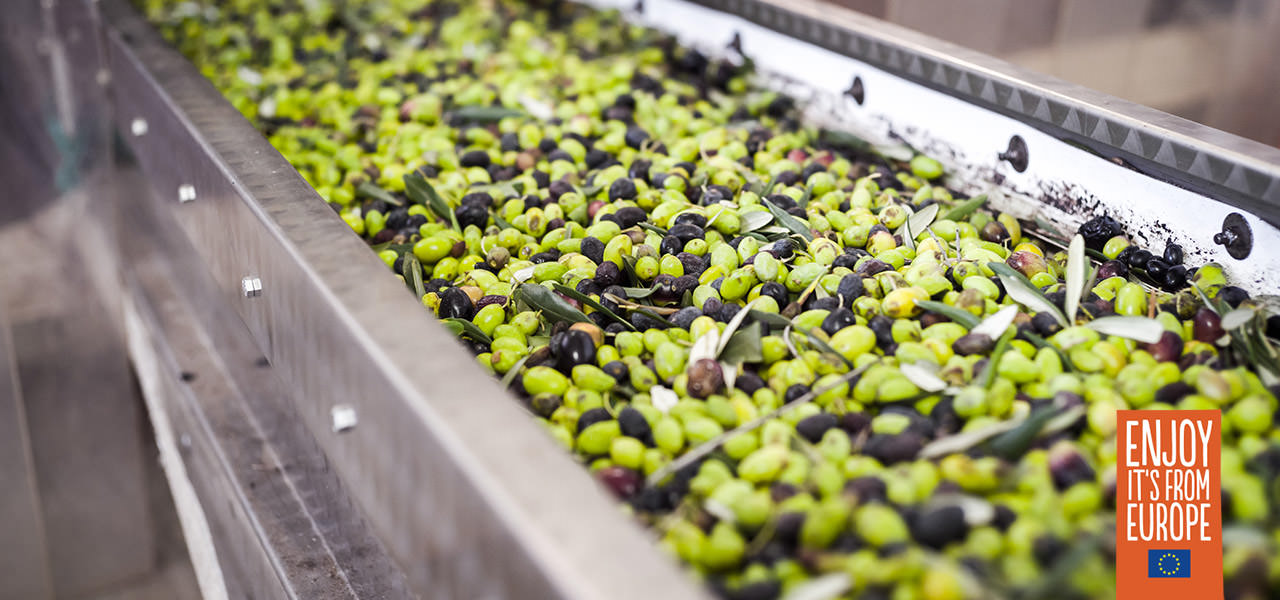
Even today harvesting is done by hand (stripping), with mechanical aids or with machines (shakers). The olives fall into a net placed under the branches of the tree.
Let’s take a look at the stages of olive processing:
- Once the leaves have been removed and the olives have been washed, they go to be pressed. The olives are crushed until a homogeneous paste is obtained. Pressing can be carried out in the traditional manner using a crusher mill (less and less common as they produced low quality oils), or with modern continuous cycle systems that use steel disc or hammer crushers.
- The next phase, called kneading, reduces the oil / water emulsion and promotes the blending of oil droplets.
- Extraction follows, in which the solid part of the paste is separated from the liquid part. This can be done using pressure in a traditional system, or using centrifuge as is the case in current continuous cycle systems.
- Finally, the oil is separated from the paste by means of a centrifugal separator. The oil must be stored in clean, odourless containers suitable for food, such as those made of stainless steel, at a temperature not exceeding 15°, or in dark glass containers to avoid it suffering alterations caused by oxidation.
